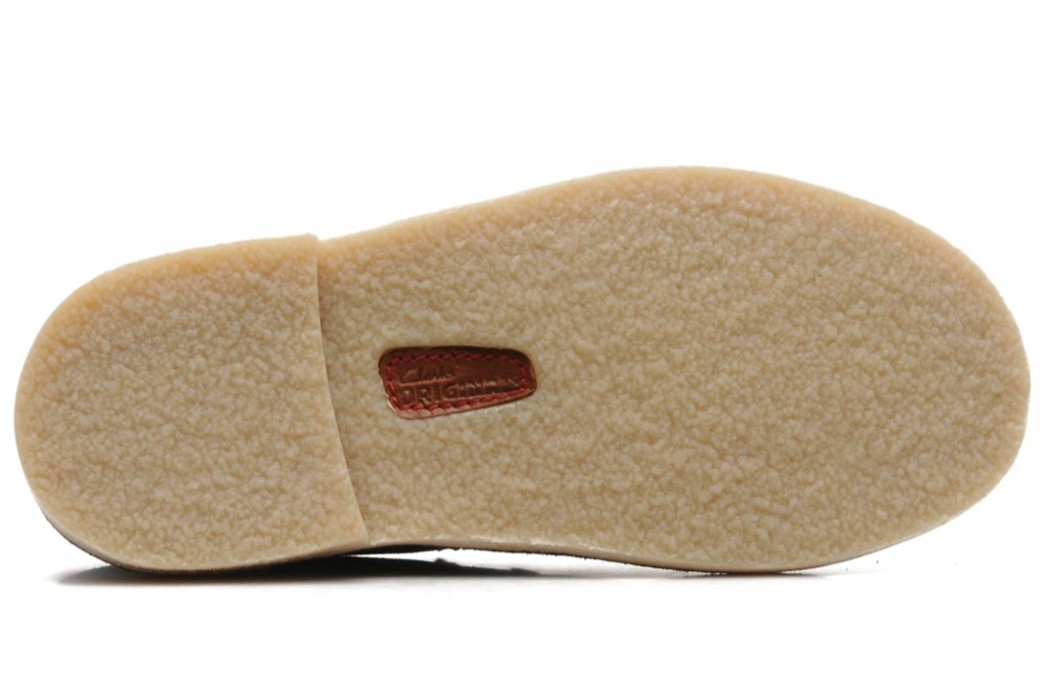Crepe Rubber

Crepe Rubber – What is it and Where Does it Come From?
Hard rubber and leather soles are popular in the shoe and boot industry, although occasionally, a softer type called Crepe Rubber is seen. Many manufactures still employ this crinkly, cushioning material nowadays for a softer sole; it is most known for having been used on the famed Clarks Desert Boot sole.
What is Crepe Crepe Rubber?
Plantation rubber, often known as crepe, is a naturally occurring substance mostly composed of latex extracted from plants such as the Para rubber tree. The raw latex is extracted from the tree in liquid form, coagulated to create a semi-solid material, and then rolled, pressed, and crushed using a number of machines to create sheets. After solidifying, the sheets of Crepe Rubber are shipped to shoe and boot makers like Yuketen or Clarks to be cut into the soles.
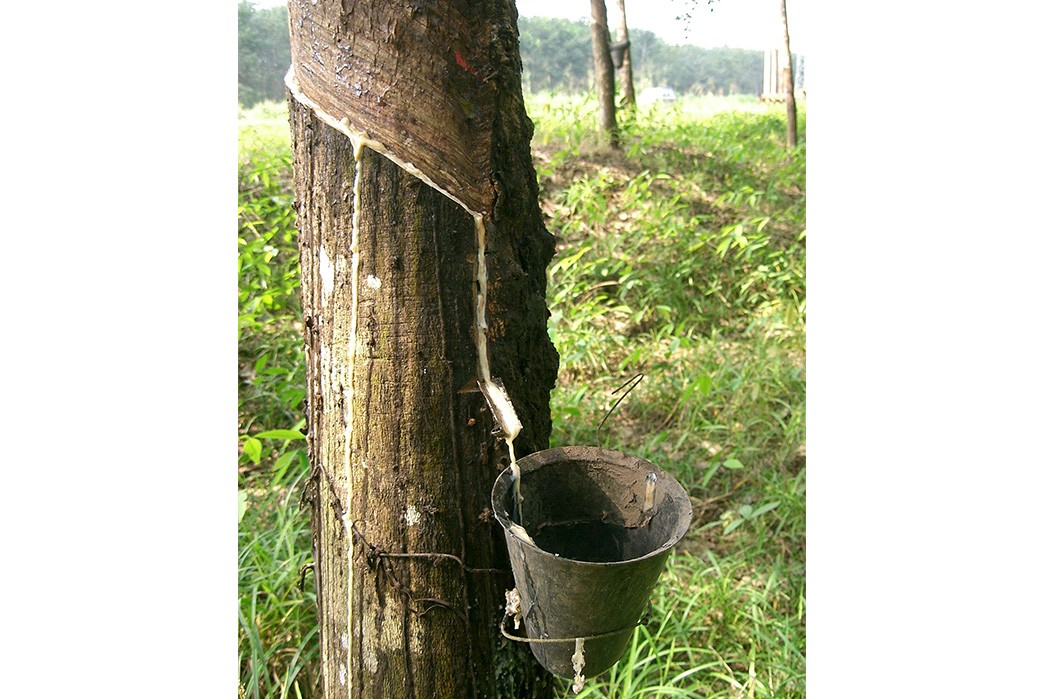
While certain varieties of crepe rubber, such Estate Brown Crepe and Pale Latex Crepe, use slightly different production techniques, most of them still include the coagulation of latex. Crepe Rubber has a typically pleasant scent and a crinkly appearance, although each sole will have a different texture and composition. Certain Crepe Rubbers need to be broken in; some are stiff and nearly as hard as leather soles when first purchased, while others are softer and offer more traction right away.
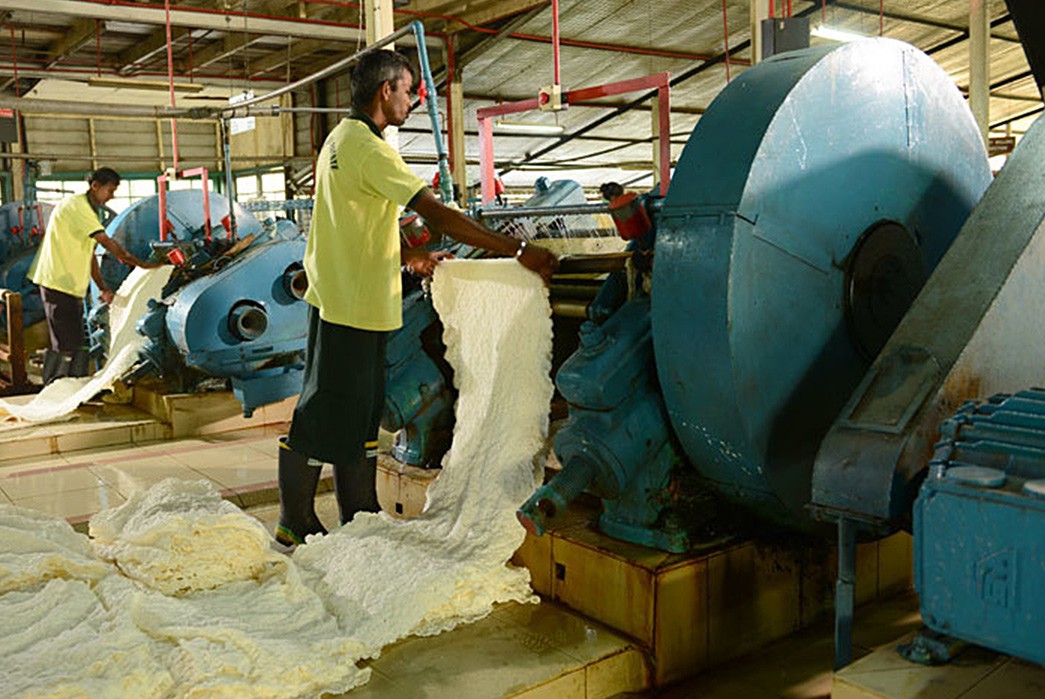
Image via Green Farms Cam Plantations
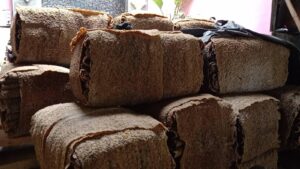
The Pros and Cons of Crepe Rubber
Pros
- Affordability — Because of its comparatively low cost of production, crepe rubber can be used to reduce the price of items that employ it.
- Comfort — The material gives your feet great traction and comfort as it gets softer with each wear. Some claim that crepe soles are the most comfortable, and companies frequently incorporate a crepe sole into their standard models to provide a more cosy choice.
- Sustainability — Rubber tapping doesn’t damage trees. It is actually possible for a single tree to provide up to 19 pounds of latex rubber year if it is tapped on a regular basis for up to 40 years.
Cons
- Cleaning — Crepe rubber soles can become quite dirty very fast due to its high level of abrasiveness, and it can be very difficult to restore the rubber to its original color after it has been marked. You may be able to remove some surface prints even though the sticky Crepe is quite sticky, but discoloration is nearly impossible to remove.
- Resoling — It’s rare that Crepe Soles can be repaired or replaced.
- Durability —Crepe rubber gradually deteriorates if it is routinely used on hard, uneven surfaces like concrete. However, the sole’s longevity depends depend on how thickly it has been carved.
Iconic Usage of Crepe Rubber Soles
Clarks Desert Boot
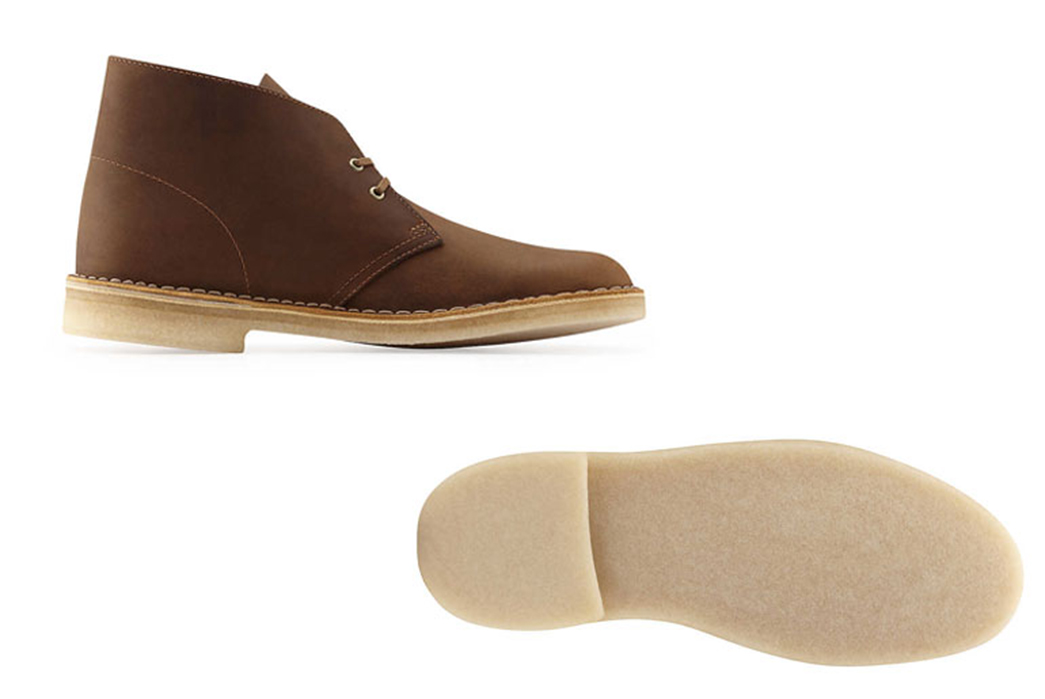
The original Clarks Desert Boot was developed in 1949 and was modeled after boots with crepe soles that soldiers stationed in Burma had purchased from local traders. One of the most iconic shoes ever made is the Desert Boot, a traditional ankle-high boot made of leather or suede with a heeled Crepe Sole.
Yuketen Angler Moc
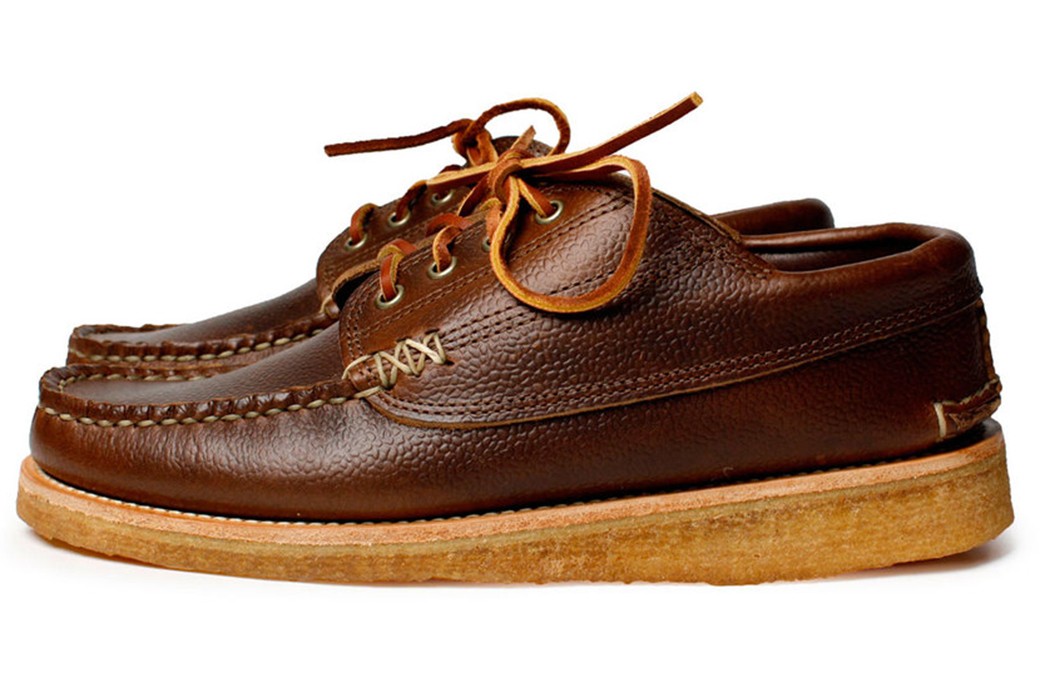
Common Projects Chelsea Boot
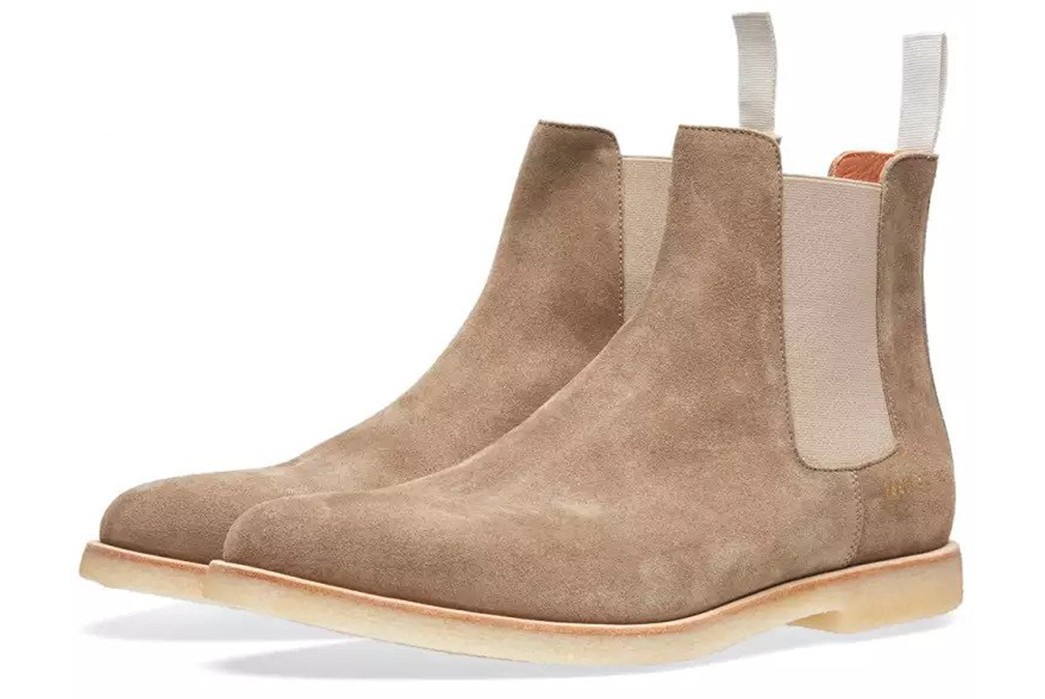
Italian shoe brand Common Projects’ version of the traditional Chelsea boot features a natural Crepe rubber sole. The elegant suede upper shoe has elasticated side gussets, and the heeled crepe sole adds additional traction.

